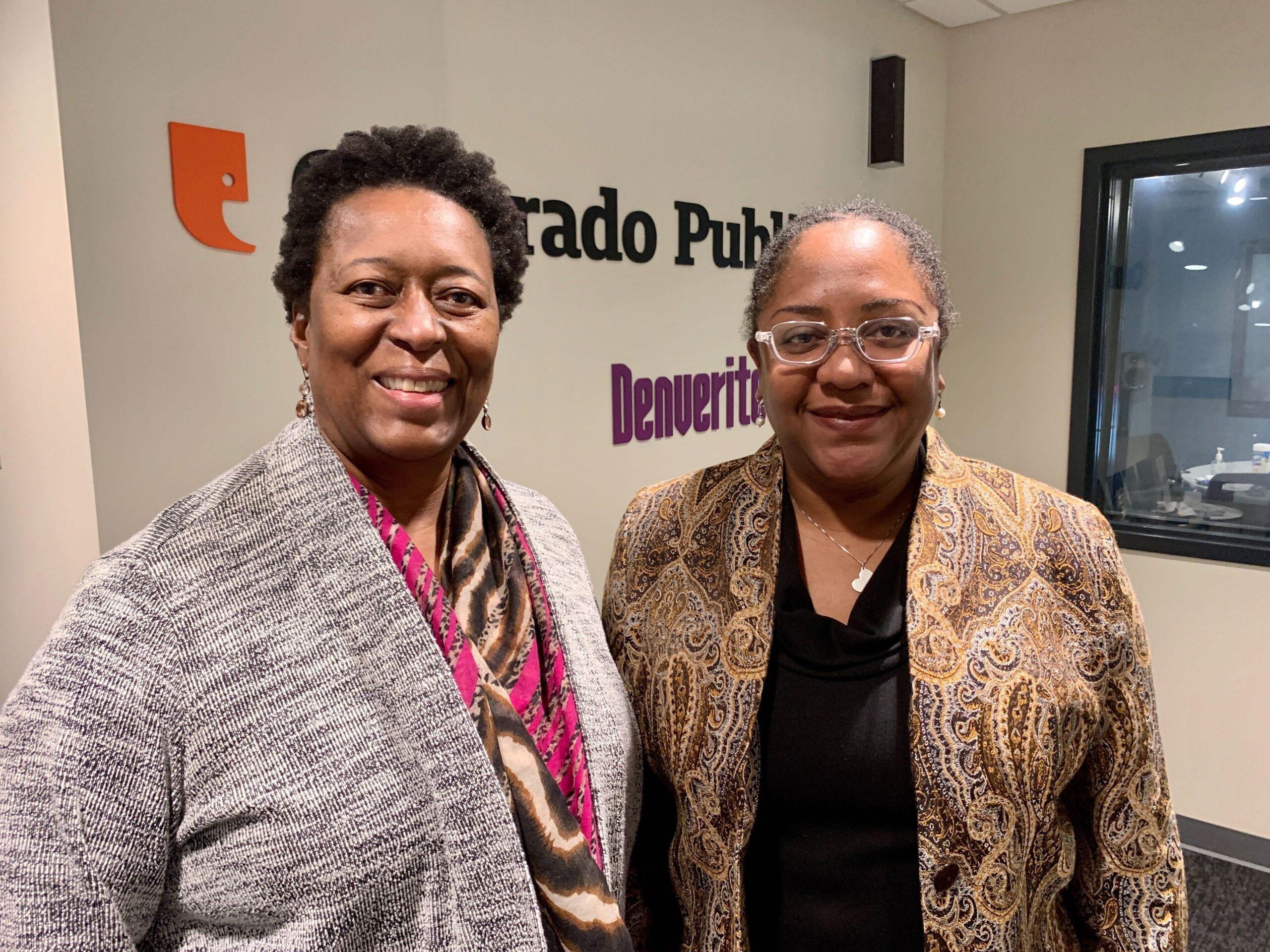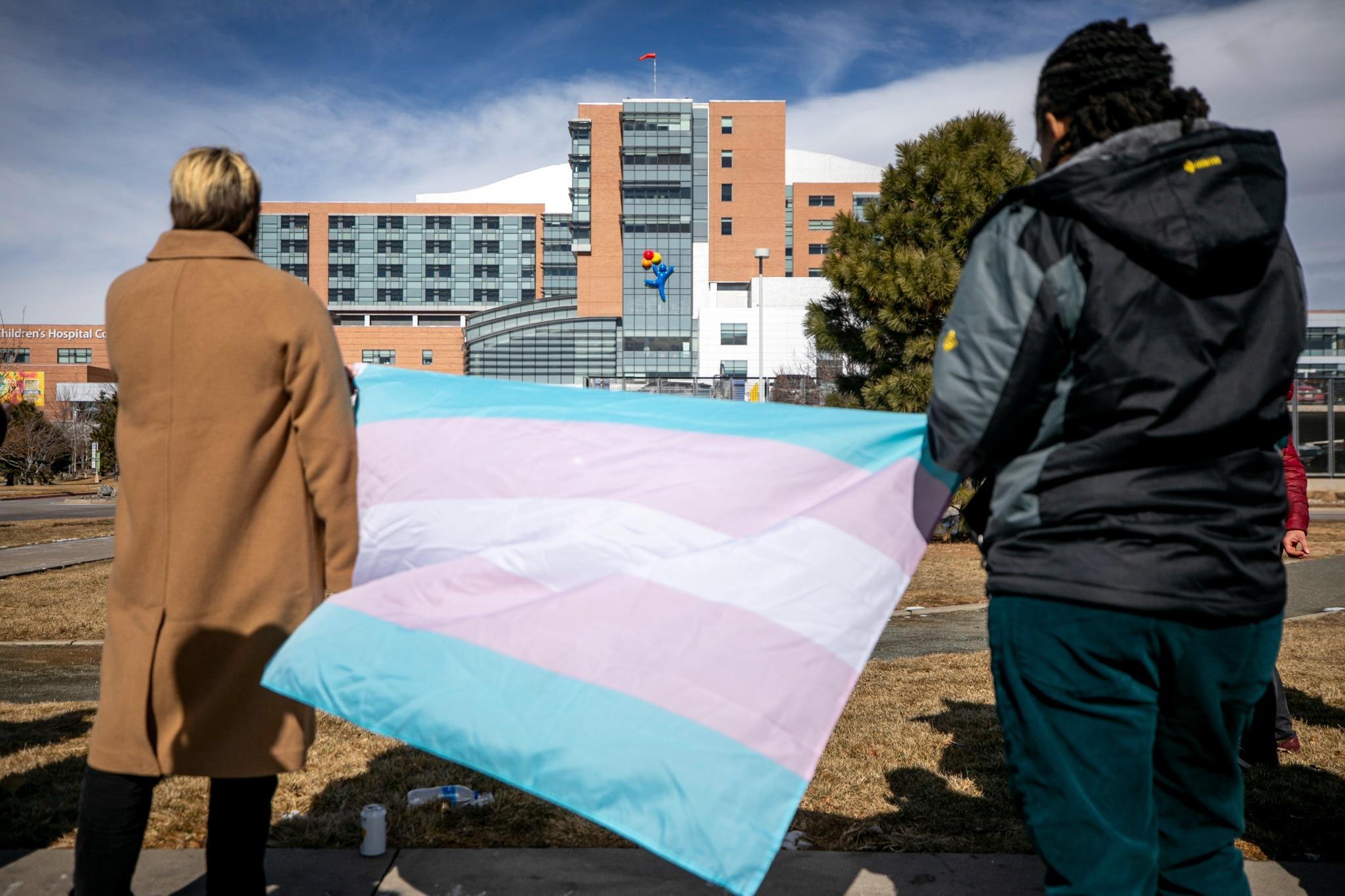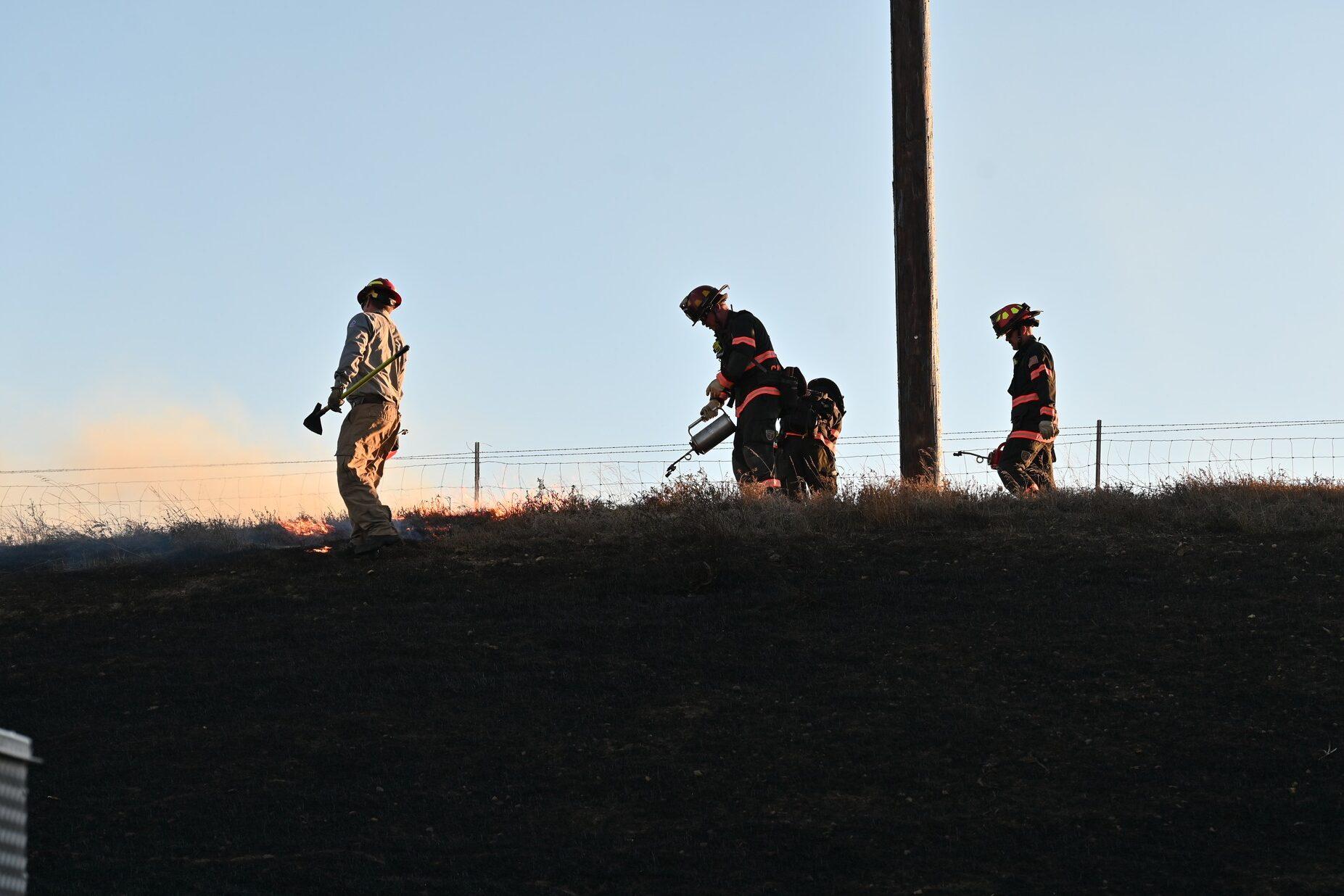
The Honorable Judge Claudia Jordan has had a painting hanging in her chamber for more than two decades. A Black man leans over a wall, blue sky and clouds above him. He reaches down to grasp a hand — also Black — that extends upward toward him.
The painting was a gift Jordan received when she was sworn in to Denver County Court as the first Black female judge in the entire Rocky Mountain region. That was in 1994. Now she’s technically retired, but she still presides over the courtroom when she’s needed.
And the painting? She’s planning to pass it on to another Black woman — one of the newest judges appointed to the bench in Colorado this year, the Honorable Judge Jill Dorancy.
“It's really pretty powerful for me,” said Dorancy, who serves in Denver District Court, “because that's exactly what it is when you have judges and attorneys who help each other.”
Colorado courts have historically struggled with diversity. The Denver Post recently reported that about 40 percent of defendants in Colorado are Black or Latino. And yet, only about 10 percent of district court judges are Black or Latino.
In the district where Elijah McClain died in police custody in 2019, The Post reports that “there has never been a Black district court judge.”
Jordan and Dorancy are two out of only eight Black female judges in the state. And as the nation grapples with systemic racism, much of it focused on the justice system, both judges said these numbers matter.
Dorancy believes people of color open up to her in court more than they might to a white judge.
“For example,” she said, “if a young Black woman comes to court, she may see me as someone who is more understanding of her. And she might tell her story more honestly or easily. At the end of the day, litigants want to be understood and feel like they’ve been heard. That’s more likely if they see someone who might mirror their lives.”
Jordan agreed. She said people of color would often smile when they walked into the courtroom and saw her sitting at the bench. “It was just kind of a sense of, okay, I may go to jail, but hey, I know that I'm going to be heard.”
That sense of kinship in diversity translates to the professional realm as well. Dorancy remembers wanting to impress Jordan the first time she appeared before her as a young attorney. “She was kind of strict and you had to make sure you were on time, that you had all your ducks in a row. But there's something powerful,” she said, “about appearing in front of someone who looks like you, who recognizes how much it takes to get to where you are.”
Dorancy said the scarcity of African American judges and attorneys in Denver courts at that time added pressure on her to perform well. “It's not a matter of carrying the burden of my race,” she said, “but it's wanting to make sure that I represent myself in a way that makes the judges proud.”
For her part, Jordan remembers Dorancy as “a hard worker and a go-getter.” “You could tell she was a special person. She cared about her clients. And she loved the law. I like people like that.”
The two bonded outside of the courtroom as well. They both worked in the historic Five Points neighborhood of Denver, an area that’s been called the “Harlem of the West.” They also both belonged to a Black women's bar association. They warmly refer to each other as “Sisters In Law.”
While both women felt called to the legal profession from an early age, they followed very different paths to the bench.
Claudia Jordan grew up as an only child raised by her grandparents in a sharecropping family in North Carolina. “I was always in a room with older people and they seemed not to notice me,” she recalled. “They were just talking about how there was a need to have good attorneys. That is when I decided that I wanted to be a lawyer.”
Most of the adults around her only had elementary level educations. So she read legal documents for people in the neighborhood who couldn’t read. “I became the little lawyer.”
Jordan went on to lead a life of many firsts. She was the first Black analyst for the Colorado Legislative Council, where she helped put together the blue book for voters. She was one of only three African Americans in her law school class at CU Boulder. And the only Black woman.
But she didn’t get to her seat as the first Black woman judge in the Rocky Mountain West without mentors. She clerked for Morris Cole, Denver’s first African American district court judge and she was supported by James Flanagan, Colorado’s first African American judge.
“I learned from both of them that you have to be better than the next person, but that was something that I learned at my grandmother's foot as well,” she said.
She gives credit to the Colorado Women’s Bar Association too. “They wanted females of color on the bench,” she said. “They have always been leaders in that.”
When she was finally sworn in as a judge, she said, she “wasn't prepared for the outpouring of love and expectations of the Black community. That made me proud and humbled me quite a bit.”
But what followed was in some ways anticlimactic. “We thought there would then be rapid succession of Black women appointed to the bench after that,” Jordan said. “But there wasn’t. It was years and years.”
She recalled walking into her first annual judicial conference and feeling very alone. “There were about ten Black men on the bench at that time,” she said. “I was like their little sister.” When the next Black woman, Karen Ashby, was appointed as a judge, they would often get confused. “Karen and I would go like, we look nothing alike!”
“So yes,” she said, “it's a lonely feeling. I wouldn’t call it a cross to bear because I’ve enjoyed every step and every moment but it gets heavy and it gets lonely. It’s nice to have someone to talk to.”
She has found that camaraderie among some of the African American women appointed to the bench in recent years, including Jill Dorancy.
Dorancy also came to Colorado from the East Coast. She was born in Brooklyn, New York, to Haitian immigrant parents who were afraid of the legal system. English was not their first language and they were concerned about being misunderstood or misrepresented. Dorancy remembered one time her family had to go to court for landlord/tenant issues. They managed to find an attorney who spoke Haitian Creole. “And just being there, having someone defend us, having someone who understood what we were saying and relay it to a judge,” Dorancy said, “was pretty powerful.”
That was the moment she knew she wanted to be an attorney.
She also remembers seeing “a lot of young, particularly young Black boys, being shot down by the police,” recalled Dorancy. “As a young child, it impacted me. I recognized the criminal justice system polices some communities more than others. I wanted to be involved in making changes.”
She spent some years as an attorney in juvenile law, representing parents in Denver’s dependency and neglect system. Then she pivoted and spent several years litigating for oil and gas companies.
It was Judge Jordan who encouraged her to apply for a judge position — during conversations about the lack of diversity in Denver’s judges. She didn’t get the job the first time around. But she was persistent. And it paid off.
“I’ve represented such a diversity of clients from homeless people whose children were being taken away from them, to people who are representing multi-million dollar oil and gas companies.” She said that range of experience serves her well in domestic relations court where she now presides.
Both Judge Jordan and Judge Dorancy feel the tides around diversity on Colorado’s courts may be changing.
Since taking office, Governor Jared Polis has appointed five Black women to the bench. He has chosen more Black women judges than his 42 predecessors combined.
Jordan thinks the move is long overdue. “Black women didn’t just start applying to the bench,” she said. “I’ve been here a long time. Do you think women of color have never applied? There have been people that have been applying throughout the years. They were just never given the opportunity.”
But she said “I’m tickled to death that I can see it happening. Who would have thought that this many African American women would be appointed in that period of time?”
She thinks the Black Lives Matter movement has had a lot to do with the shift. “It has raised people’s consciousness about some injustices that have occurred in every system including the judicial system,” Jordan said. “You’d have to be living under a rock not to see that and go like ‘Oh this is an opportunity for me to maybe do something where I can.’ I think that’s what Polis has done.”
Judge Dorancy said for her part she often intentionally limits her consumption of the news about social issues like Black Lives Matter, lest it influence her decision-making in court too greatly.
“The role we play is to correct the impacts of disparities in the criminal justice system,” she said.
Both judges acknowledged that commitment to upholding the law can put them in difficult moral positions sometimes.
“When the constitution was written,” Jordan pointed out, “African Americans were three fifths of a person. It was law but it wasn’t right.” For a more current example, she said she never applied to be a district court judge because Colorado had the death penalty until this year. “I could not have sentenced anyone to death,” she said. “So why put myself in that position? That was one of the laws that I knew that I could not impose.”
There is, of course, room for interpretation of existing laws. It has been a focal point in the recent confirmation hearings of Amy Coney Barrett for the U.S. Supreme Court. And Jordan said it’s one of the most profound reasons why the highest court in the land needs more diversity. “The late Justice Ruth Bader Ginsburg pointed out once in a dissenting opinion,” Jordan said, “that the men had never been 13-year-old girls. Nor could she have the experience of being a Black girl.”
Judges Jordan and Dorancy do have that experience. And for that reason, they see themselves as role models for young Black girls especially.
“I spoke to a group of kids in an alternative school,” Jordan said. “They were just ready for me to attack me and attack the system. But after I explained my role, they began to better understand the whole system. And after that, the instructor called and said that a girl who had not really wanted to participate was now considering going to law school. And I just felt good about that.”
This piece was inspired by an article in Essence Magazine by Chandra Thomas Whitfield.









